Table of Contents
Exploring the Karkebibar Temple
Nestled high on a hill in Nepal’s Surkhet Valley, the Karkebihar Temple is a treasure trove of history, spirituality, and stunning architecture. Built in the 12th century, this ancient temple is a perfect blend of cultural heritage and natural splendor. Whether you’re a history enthusiast, a spiritual seeker, or simply someone who loves exploring beautiful places, Karkebihar Temple offers an unforgettable experience.
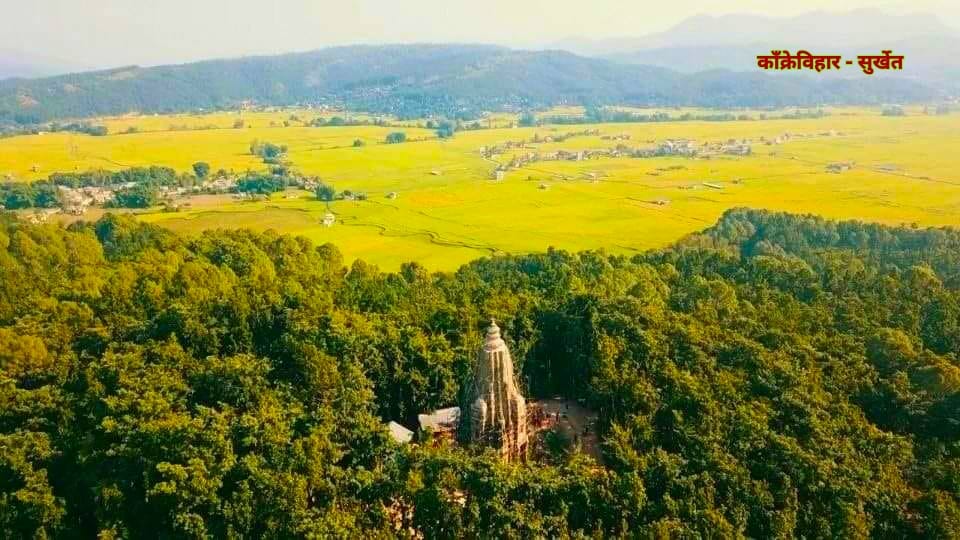
A Peaceful Spot with Breathtaking Views
The Karkebihar Temple is located on a triangular piece of land surrounded by lush forests and rolling hills. From its elevated position, you can enjoy panoramic views of the Surkhet Valley, with its patchwork of green fields and small villages. The serene atmosphere, filled with the sounds of chirping birds and rustling leaves, makes it an ideal place for meditation, reflection, or simply soaking in the beauty of nature.
A Journey into the Past
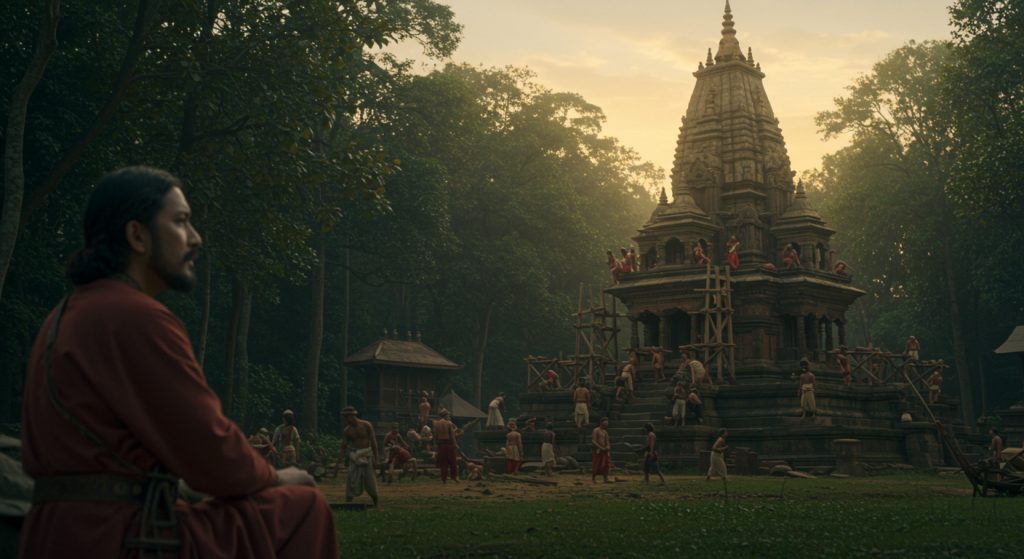
The name Karkebihar comes from “Kukkutapada-vihara,” which translates to “monastery of the hen’s feet.” Historians believe the temple was originally a Buddhist monastery built in the 8th century. Over time, it became a significant center for both Buddhists and Hindus, showcasing Nepal’s unique blend of religious traditions.
Local legends add to the temple’s charm. Some say it was built by a king named Salivahan, while others connect it to the Pandavas from the Mahabharata. Though the exact origins remain a mystery, the temple’s ruins tell fascinating stories about its glorious past.
Architectural Brilliance of Karkebihar Temple
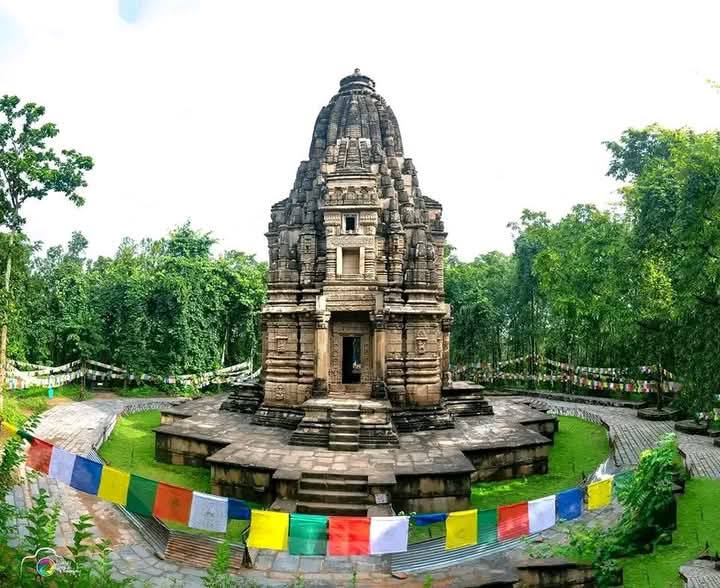
One of the most striking features of the Karkebihar Temple is its architecture. Even in ruins, the temple’s design and craftsmanship leave visitors in awe. The foundation is made of carefully stacked stone bricks, with some walls as thick as 12 feet. These sturdy walls were built to withstand the test of time and the elements.
The temple’s layout includes a main assembly hall, courtyards, smaller shrines, and monks’ dwellings. Intricate carvings on windows, pillars, and gateways showcase the skill and artistry of the ancient builders. The blend of functionality and symbolism in the design reflects the temple’s spiritual significance.
The use of stone in the construction is particularly impressive. The builders created multi-level structures with precision, and the remains of the temple still display the grandeur it once held. The carvings and decorative elements are reminiscent of other famous Nepalese Buddhist sites, such as Lumbini and Kapilavastu, highlighting the temple’s importance in the region’s history.
Treasures from the Past
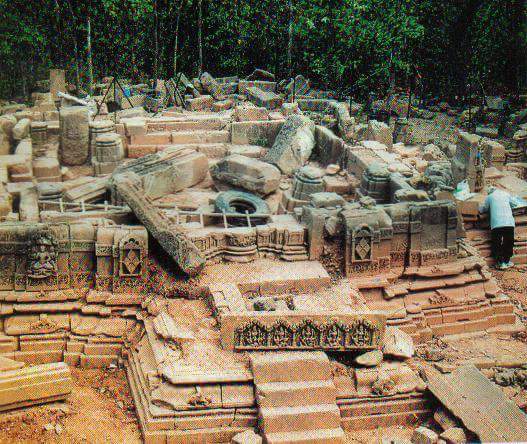
Over the years, excavations at the Karkebihar Temple have uncovered a wealth of artifacts. These include statues of Buddha, Hindu deities like Saraswati and Vishnu, and stone plaques engraved with sacred Buddhist mantras like “Om Mani Padme Hum.” Pottery shards, clay tablets, and circular chaitya-style stupas have also been found, offering clues about the daily lives and spiritual practices of the people who once lived here.
One of the most significant discoveries is a collection of statues that depict both Buddhist and Hindu figures. This fusion of religious artifacts reflects the harmonious coexistence of the two faiths in Nepal’s cultural history.
A Sacred Place for All
Today, the Karkebihar Temple holds deep spiritual significance for both Buddhists and Hindus. Pilgrims visit the site to worship the ancient statues and seek blessings. The temple’s tranquil surroundings make it an ideal place for meditation and spiritual reflection.
Every year, during the Panchadana festival, devotees gather to bathe the temple’s sculptures, celebrating its rich spiritual heritage. The nearby Latikoili Temple also attracts visitors during important Hindu festivals, adding to the area’s religious importance.
Myths and Legends
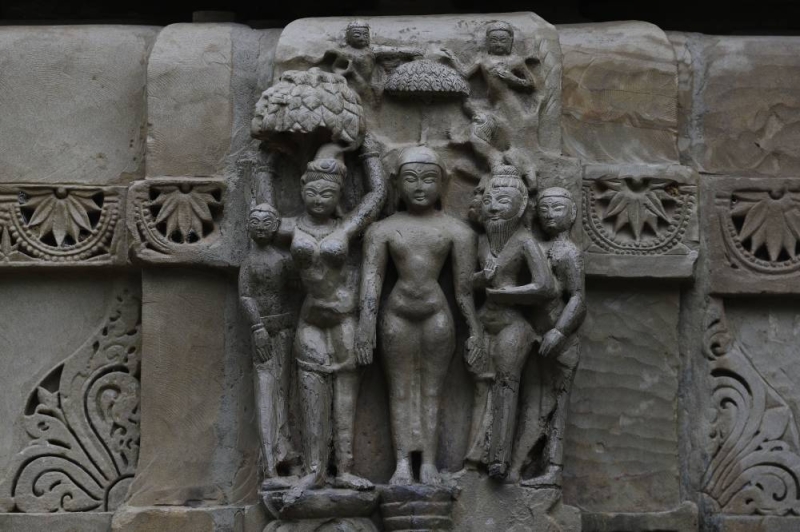
The Karkebihar Temple is surrounded by fascinating stories and legends. Some believe the temple is cursed, bringing bad luck to anyone who removes artifacts from the site. Others tell tales of King Salivahan, who tried to build the temple overnight but failed, leaving it incomplete.
These stories, passed down through generations, add to the temple’s mystique and highlight the deep connection between the local community and this ancient site.
A Nature Lover’s Paradise
Beyond its historical and spiritual significance, the Karkebihar Temple is a haven for nature lovers. The surrounding forest is home to diverse flora and fauna, including deer, wild boars, and colorful birds. The area’s vibrant wilderness makes it a perfect destination for bird-watching, picnics, and leisurely walks.
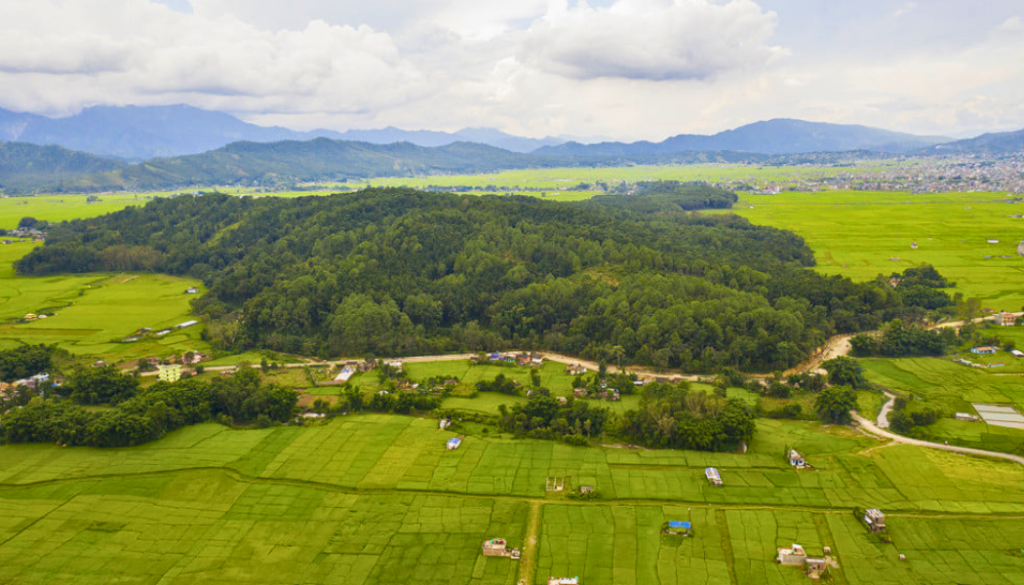
The temple’s serene environment, coupled with its stunning views of the Surkhet Valley, offers a peaceful retreat from the hustle and bustle of modern life. It’s a place where visitors can reconnect with nature and experience the timeless beauty of Nepal’s landscapes.
Restoring the Temple’s Glory
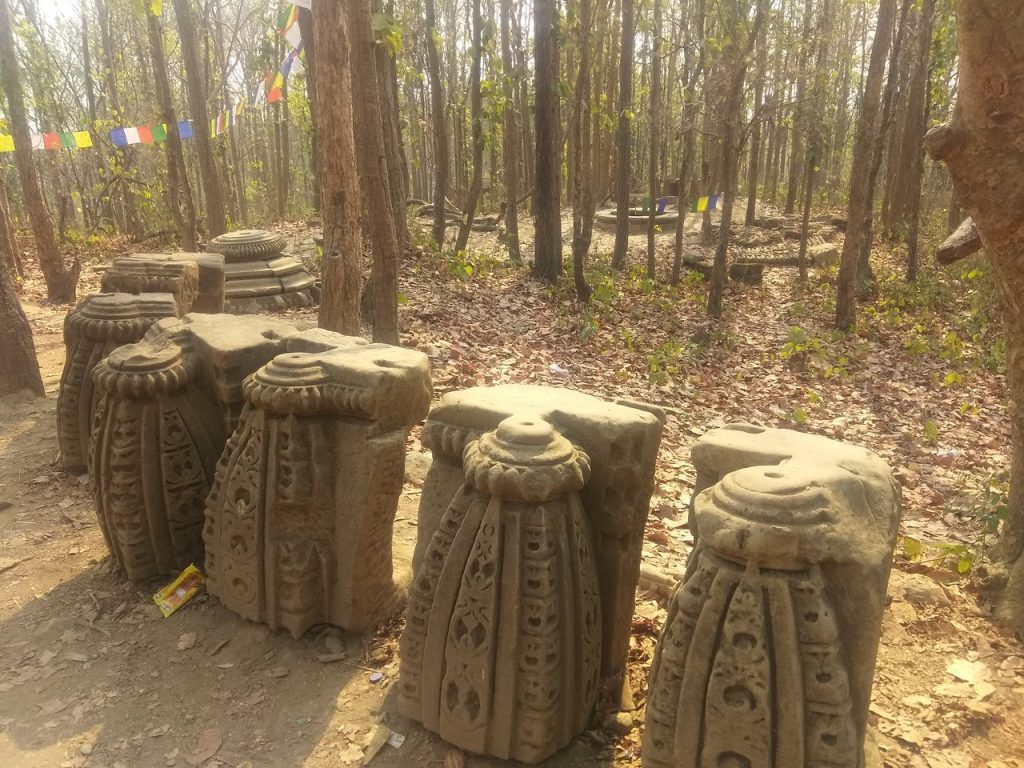
In recent years, efforts have been made to restore and preserve the Karkebihar Temple. Using ancient stone blocks and traditional techniques, the temple has been rebuilt in its original Shikhar architectural style. This restoration has not only safeguarded the temple’s heritage but also made it a popular destination for tourists.
Plans to develop the surrounding area, including the construction of a zoo, aim to attract more visitors and promote sustainable tourism. These initiatives ensure that the temple’s legacy continues to inspire future generations.
How to Visit Karkebihar Temple
The Karkebihar Temple is located just 10 kilometers from Surkhet’s city center, making it easily accessible by road. Visitors can explore the temple independently or with a guide to gain deeper insights into its history and significance. Whether you’re interested in its architecture, spirituality, or natural beauty, a visit to Karkebihar Temple promises an unforgettable experience.
Final remarks
The Karkebihar Temple is more than just an ancient ruin; it’s a living symbol of Nepal’s cultural and spiritual heritage. With its fascinating history, stunning architecture, and breathtaking natural beauty, it’s a must-visit destination for anyone traveling to western Nepal. Whether you’re drawn to its spiritual aura, its architectural brilliance, or its serene surroundings, Karkebihar Temple offers something for everyone. Come and discover the magic of this 12th-century wonder for yourself!
FAQ
Where is the Karkebibar Temple located?
The Karkebibar Temple is located in [specific location], surrounded by [mention natural features, e.g., hills, forests, or rivers], making it a serene and picturesque destination.
What is the historical significance of the Karkebibar Temple?
The temple dates back to [specific era or century] and is renowned for its historical and cultural importance. It is believed to have been built by [king/dynasty/community] and is associated with [mythological or historical events].
What architectural style is the Karkebibar Temple known for?
The temple showcases [specific architectural style, e.g., Dravidian, Nagara, or local traditional design], featuring intricate carvings, towering spires, and detailed sculptures that reflect the craftsmanship of its time.
Is photography allowed inside the Karkebibar Temple?
Photography rules vary; while some areas may allow it, others, especially the inner sanctum, may restrict it. It’s best to inquire at the temple premises.
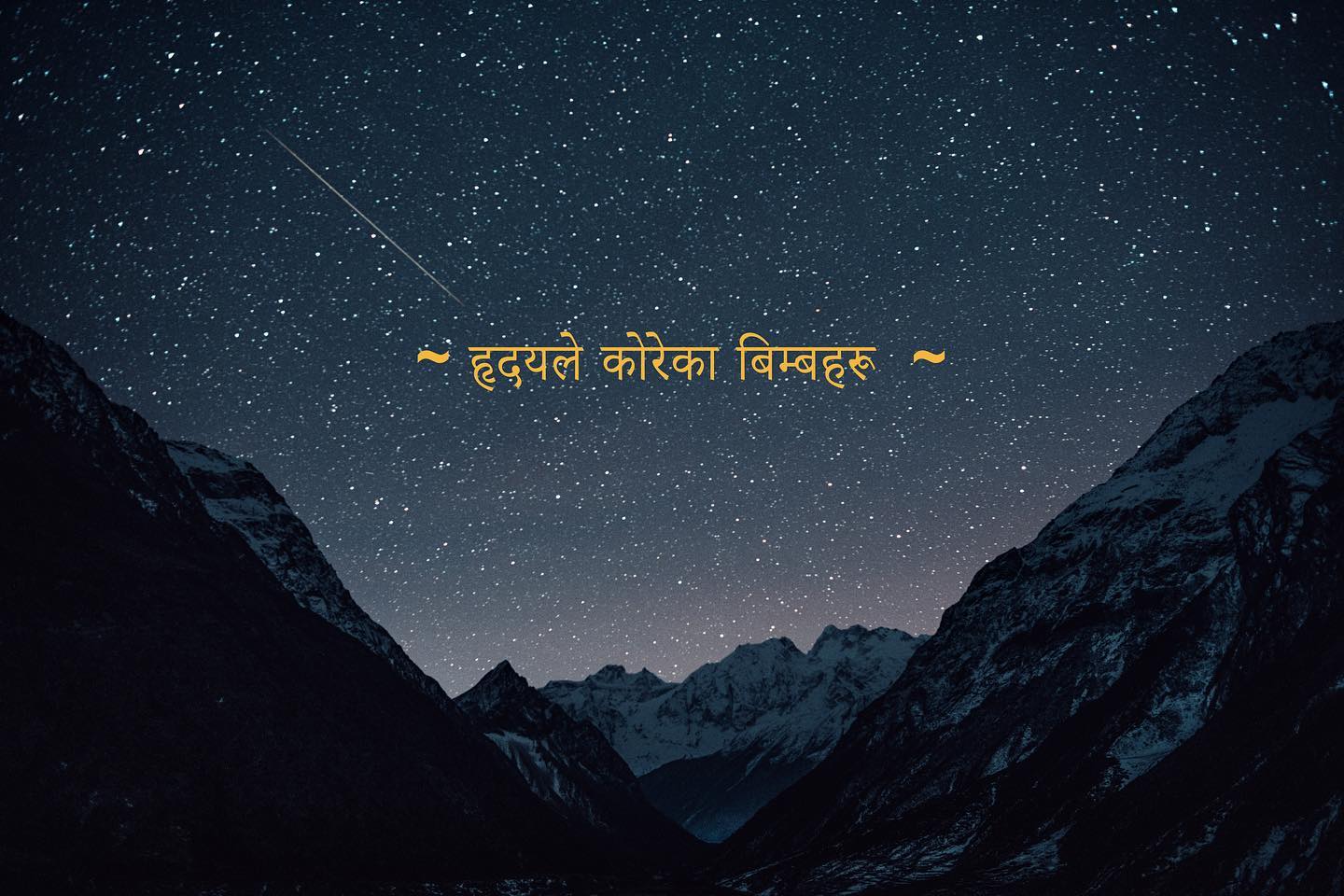
Leave a Reply